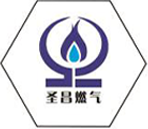
Nov . 02, 2024 04:09
Back to list
gas pressure regulator valve
Understanding Gas Pressure Regulator Valves Essential Components in Gas Management
Gas pressure regulator valves are critical components in the management of gas systems. They ensure that gases are delivered at a consistent and safe pressure, thereby protecting both the equipment involved and the operators using these systems. This article will explore the fundamental aspects of gas pressure regulator valves, their functions, and applications.
At its core, a gas pressure regulator valve is designed to reduce and maintain the pressure of gases flowing through a system. Whether in residential, commercial, or industrial settings, maintaining the correct pressure is essential for the safe and efficient operation of equipment. Without regulation, gas pressures can fluctuate, potentially leading to dangerous situations such as leaks, explosions, or equipment malfunction.
The primary function of these valves is to receive high-pressure gas from a source—such as a gas cylinder, a pipeline, or a storage tank— and reduce it to a predetermined, lower level before it reaches the point of use. This is accomplished through various mechanisms typically involving a diaphragm that reacts to pressure changes in the system. As the downstream pressure rises, the diaphragm moves to reduce the flow of gas, thereby maintaining the desired pressure. Conversely, if the pressure drops below a set point, the diaphragm allows more gas to flow in, ensuring a stable supply.
gas pressure regulator valve

Gas pressure regulators come in various designs and sizes, tailored for specific applications. For example, residential gas systems, such as those used for heating and cooking, typically require smaller, more compact regulators that can handle lower flow rates. In contrast, industrial applications may necessitate larger, more robust regulators designed to manage higher volumes and pressures.
One vital aspect of gas pressure regulators is their safety features. Many modern regulators are equipped with relief valves that prevent excessive buildup of pressure, which could lead to catastrophic failure. Additionally, they often incorporate filters to remove impurities from the gas, ensuring that only clean gas is supplied to the equipment.
In terms of applications, gas pressure regulators are used across a wide array of industries. They play a crucial role in natural gas distribution, welding operations, pharmaceutical manufacturing, and even in the food and beverage industry. In each of these contexts, regulating gas pressure not only ensures compliance with safety standards but also enhances the efficiency and effectiveness of processes reliant on gas.
In conclusion, gas pressure regulator valves are indispensable tools in the realm of gas management. By ensuring the safe and consistent delivery of gas, these valves help prevent accidents and enhance operational efficiency. As technology advances, we can expect further improvements in their design and functionality, making them even more reliable in the critical task of gas regulation.
Next:
Latest news
-
Safety Valve Spring-Loaded Design Overpressure ProtectionNewsJul.25,2025
-
Precision Voltage Regulator AC5 Accuracy Grade PerformanceNewsJul.25,2025
-
Natural Gas Pressure Regulating Skid Industrial Pipeline ApplicationsNewsJul.25,2025
-
Natural Gas Filter Stainless Steel Mesh Element DesignNewsJul.25,2025
-
Gas Pressure Regulator Valve Direct-Acting Spring-Loaded DesignNewsJul.25,2025
-
Decompression Equipment Multi-Stage Heat Exchange System DesignNewsJul.25,2025

